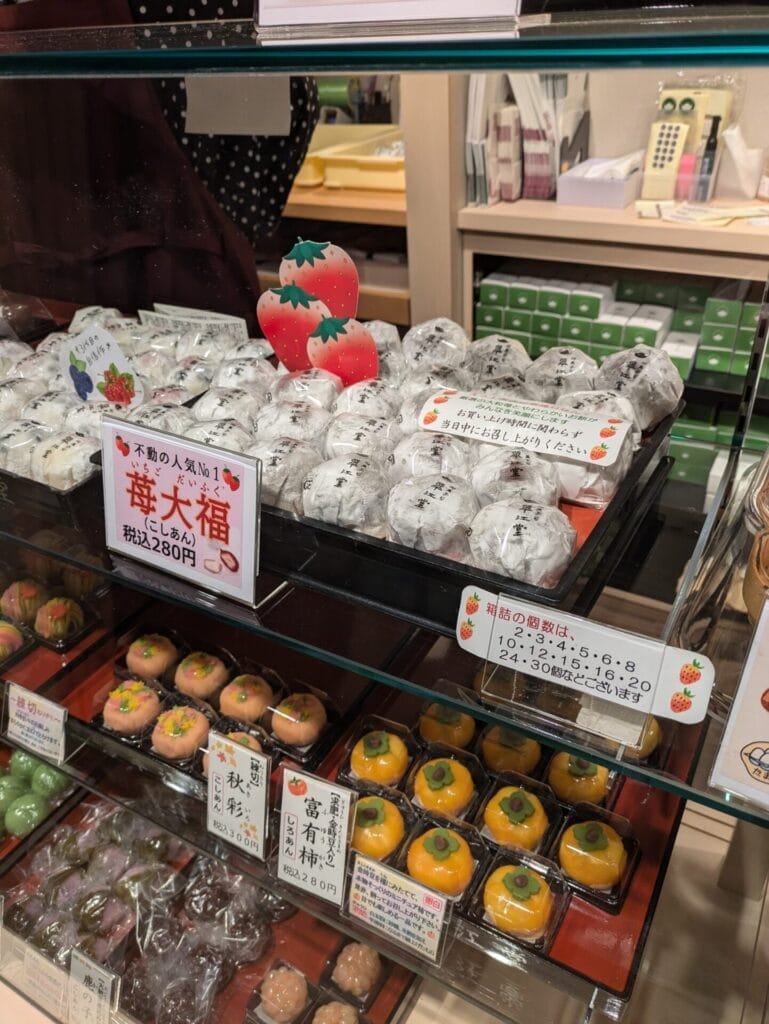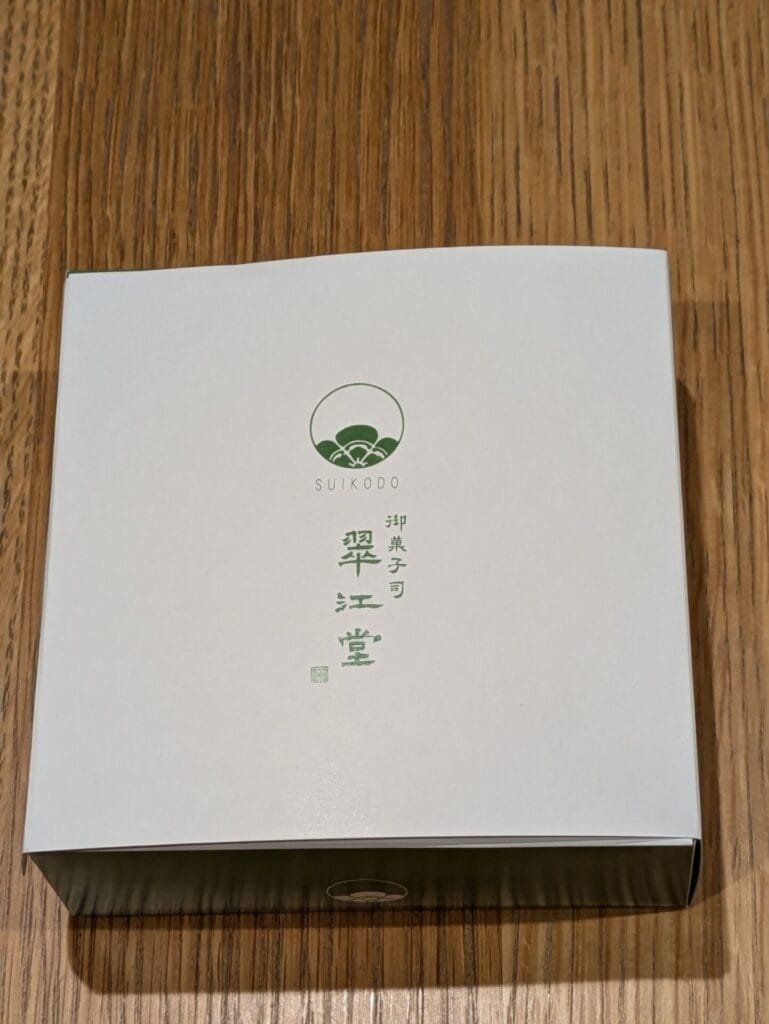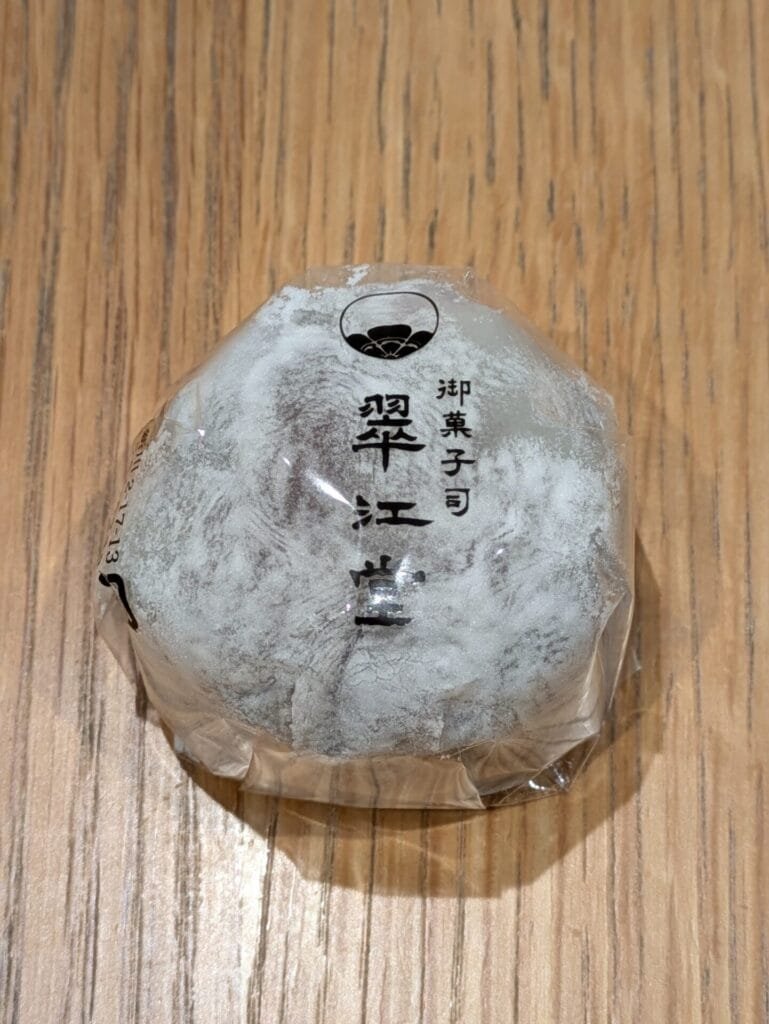A Hidden Gem of Tokyo Wagashi: Suikoudo’s Heavenly Strawberry Daifuku
A Japanese Sweets Sanctuary by the Sumida River: Discovering Suikoudo
In Tokyo’s Chuo Ward, where traditional row houses stand alongside modern high-rises, lies Suikoudo, a venerable Japanese sweets shop with over 80 years of history. Located just across the Sumida River from the rapidly developing Tsukuda area, Suikoudo masterfully blends traditional techniques with contemporary sensibilities in their wagashi creations.
Step inside, and you’ll find yourself surrounded by an array of colorful Japanese sweets that reflect the changing seasons. Among these treasures, their signature strawberry daifuku has captured the hearts of countless fans, embodying the perfect marriage of traditional craft and modern taste.
Eight Decades of Wagashi Excellence: The Legacy of Suikoudo
Suikoudo’s story begins in 1943, during the challenging years of World War II. For more than 80 years, they have preserved traditional Japanese confectionery techniques while embracing innovation.
Their approach isn’t merely about maintaining tradition. While honoring time-tested methods, Suikoudo actively incorporates modern elements, as seen in their renowned strawberry daifuku and seasonal creations that sometimes even embrace contemporary celebrations like Halloween.
Their commitment to quality begins with ingredient selection. Using no preservatives or additives, Suikoudo creates handmade Japanese sweets that continue to captivate both longtime fans and new customers alike.

Where Tradition Meets Innovation: Suikoudo’s Signature Creations
Let’s explore Suikoudo’s masterpiece – their strawberry daifuku. Each piece features a carefully selected large strawberry wrapped in specially prepared sweet bean paste, all encased in incredibly soft, melt-in-your-mouth mochi. The visual appeal matches its extraordinary taste, creating an experience that keeps customers coming back for more.

Another notable creation is their “Soga no Sato,” a joyo-manju (yam cake) containing whole candied Japanese plum wrapped in refined white bean paste. This long-selling product represents their dedication to traditional Japanese sweets.
Suikoudo also offers seasonal wagashi that showcase the best of each season: cherry blossoms in spring, refreshing water manju in summer, chestnuts in autumn, and yuzu citrus in winter. Each creation is a small work of art that captures the essence of Japan’s seasonal changes.
Savoring Tokyo’s Finest Daifuku: The Suikoudo Experience


Take a bite of Suikoudo’s strawberry daifuku, and you’ll first notice the exceptional softness of the mochi. It melts in your mouth while maintaining just the right amount of elasticity, releasing a refined sweetness.
Though the strawberry might appear modest in size, its presence becomes unmistakable as you eat. The fruit’s sweet-tart flavor creates a perfect harmony with the sweet bean paste. The incredibly soft mochi texture enhances this harmony, creating a truly memorable taste experience.
The refined sweetness that showcases the natural flavors of the ingredients, combined with the warmth of handmade craftsmanship, demonstrates the pinnacle of artisanal skill. Only wagashi made with such careful attention to detail could achieve this level of excellence.
Visiting Hatchobori’s Hidden Treasure: Finding Suikoudo
Here’s how to find Suikoudo:
Address: 2-17-13 Shinkawa, Chuo-ku, Tokyo
Nearest Stations:
- 5-minute walk from Exit A4 of Hatchobori Station on the Tokyo Metro Hibiya Line
- 5-minute walk from Exit B4 of Hatchobori Station on the JR Keiyo Line
Hours:
- Monday to Friday: 9:00 AM – 6:00 PM
- Saturday: 9:00 AM – 2:00 PM
- Closed: Sundays and holidays
Their popular strawberry daifuku often sells out early, so calling ahead for a reservation is recommended. For seasonal wagashi, visiting in the morning offers the best selection.
When in Hatchobori, make sure to visit Suikoudo. Here, you’ll discover Japanese sweets that represent both 80 years of tradition and modern innovation. Why not take a moment to experience the flavors of Japan’s seasons through these exquisite wagashi creations?
